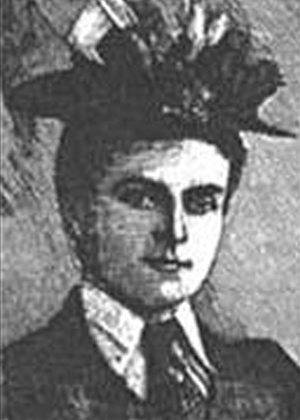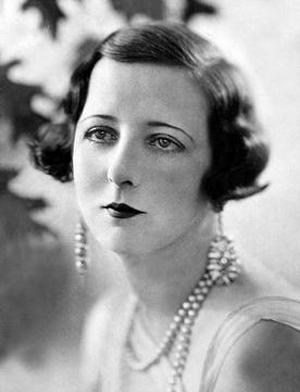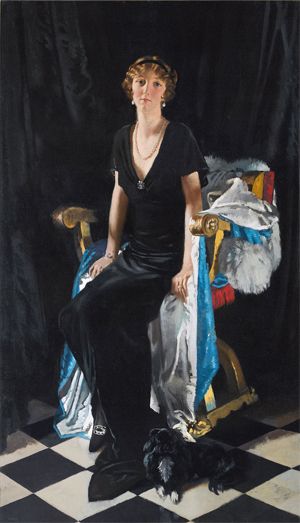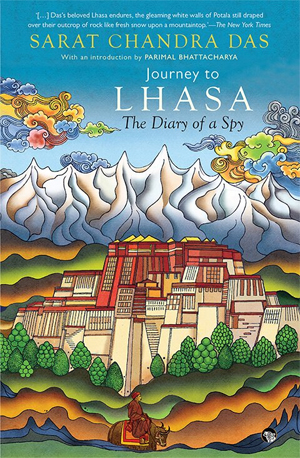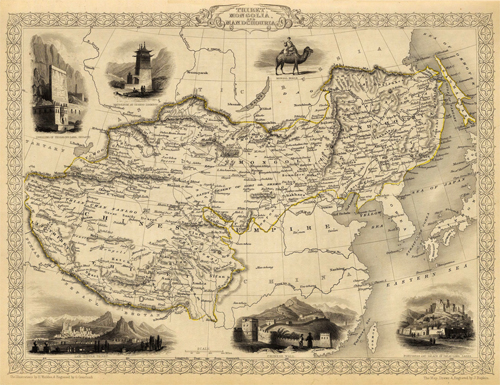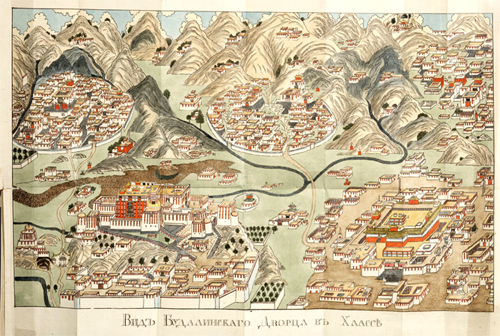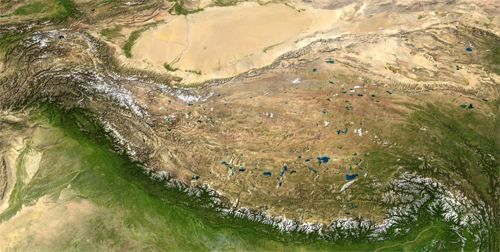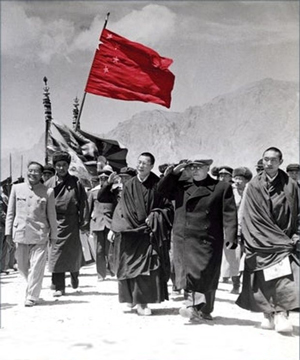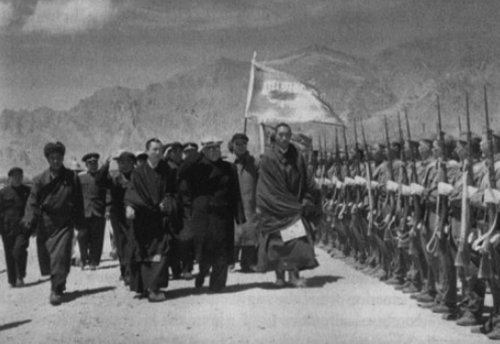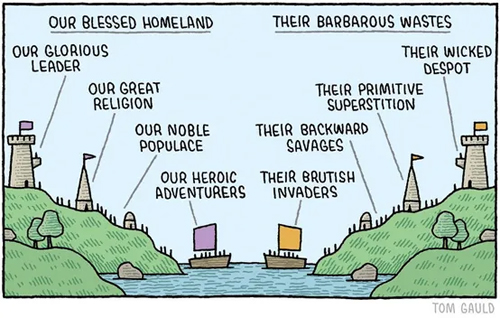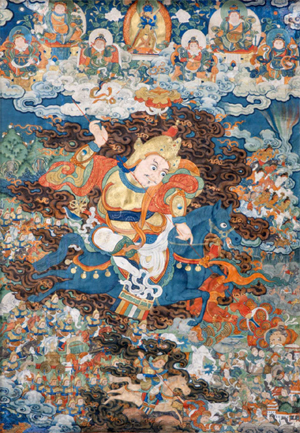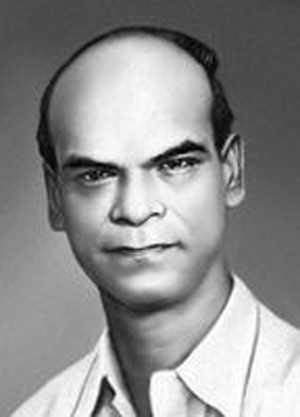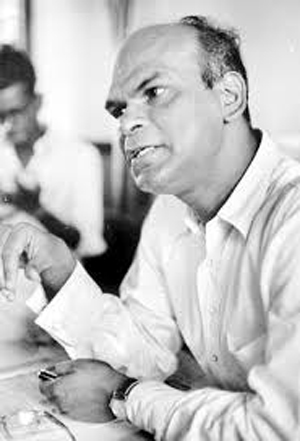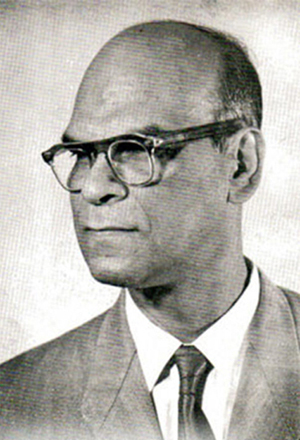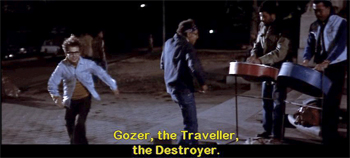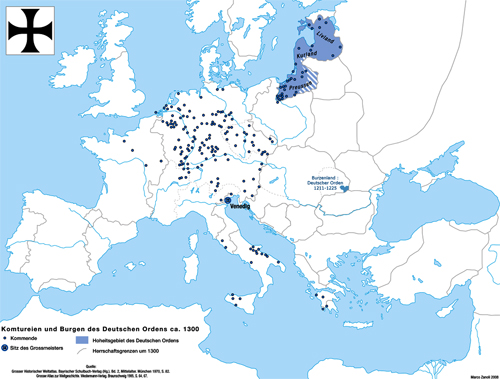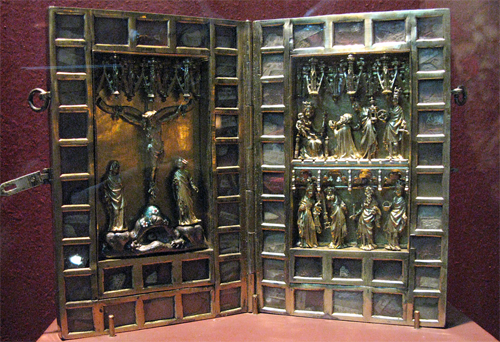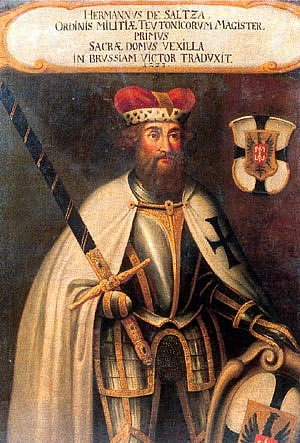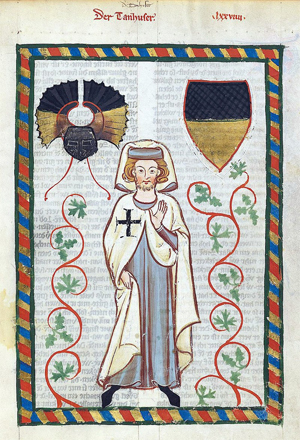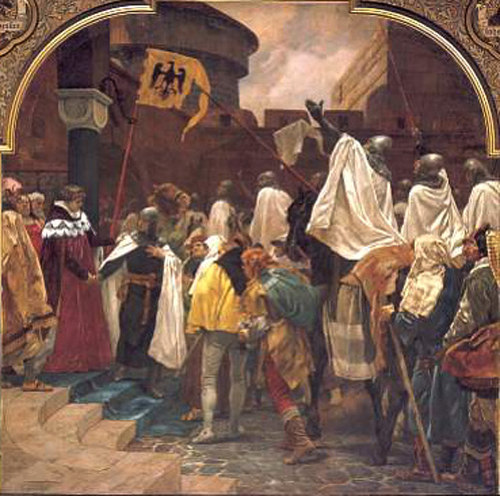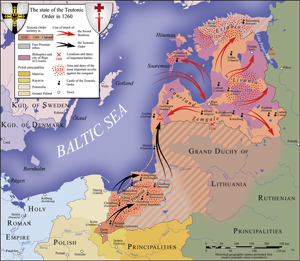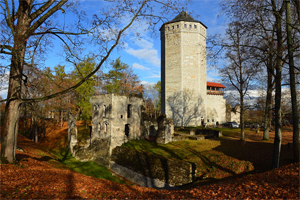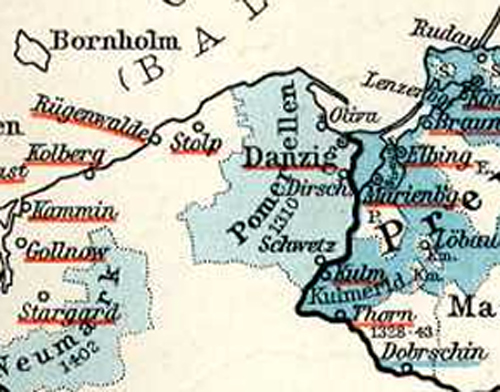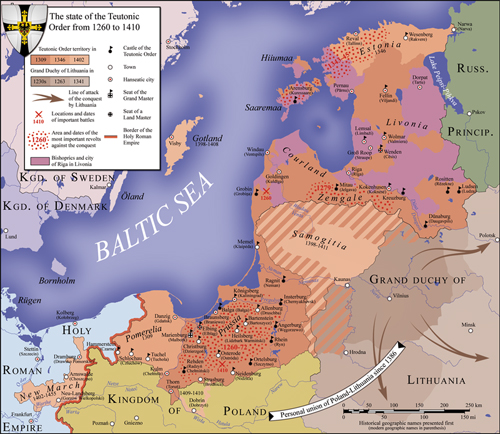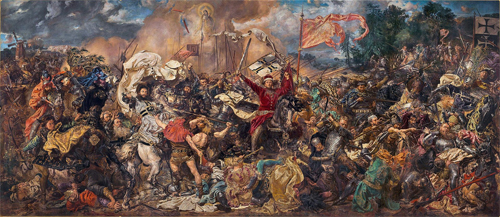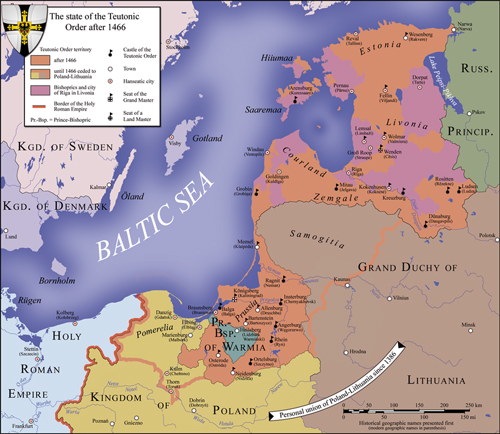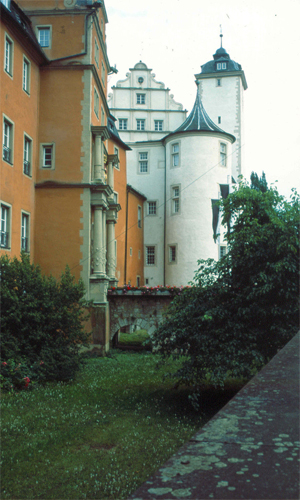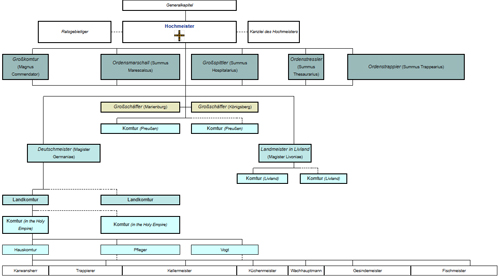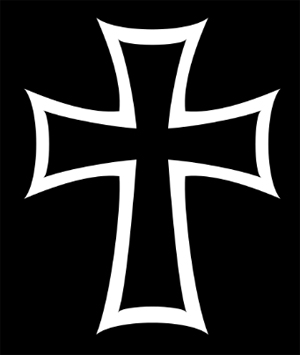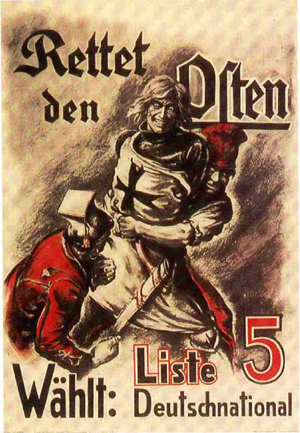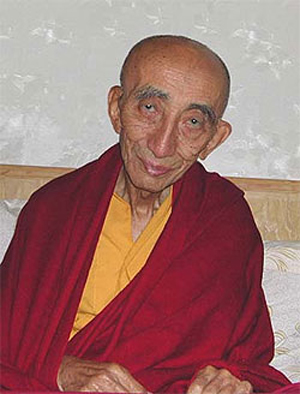Part 2 of 2
Science
Relation to scienceSee also: Conflict thesis and Relationship between religion and science
Since the scientific revolution of the 18th-century Enlightenment, the relationship of science to religion[126][127][page needed] and to spirituality[citation needed] has developed in complex ways. Historian John Hedley Brooke describes wide variations:
The natural sciences have been invested with religious meaning, with antireligious implications and, in many contexts, with no religious significance at all."[128]
Brooke has proposed that the currently held popular notion of antagonisms between science and religion[129][130] has historically originated with "thinkers with a social or political axe to grind" rather than with the natural philosophers themselves.[131] Though physical and biological scientists today see no need for supernatural explanations to describe reality[132][133][page needed][134][note 10], some[quantify] scientists continue to regard science and spirituality as complementary, not contradictory,[135][136] and are willing to debate,[137] rather than simply classifying spirituality and science as non-overlapping magisteria.
A few[quantify] religious leaders have shown openness to modern science and its methods. The 14th Dalai Lama, for example, has proposed that if a scientific analysis conclusively showed certain claims in Buddhism to be false, then the claims must be abandoned and the findings of science accepted.[138]
HolismMain article: Holism
During the twentieth century the relationship between science and spirituality has been influenced both by Freudian psychology, which has accentuated the boundaries between the two areas by accentuating individualism and secularism, and by developments in particle physics, which reopened the debate about complementarity between scientific and religious discourse and rekindled for many an interest in holistic conceptions of reality.[127]:322 These holistic conceptions were championed by New Age spiritualists in a type of quantum mysticism that they claim justifies their spiritual beliefs,[139][140] though quantum physicists themselves on the whole reject such attempts as being pseudoscientific.[141][142]
Scientific research
Health and well-beingMain article: Religion and health
Various studies (most originating from North America) have reported a positive correlation between spirituality and mental well-being in both healthy people and those encountering a range of physical illnesses or psychological disorders.[143][144][145][146] Although spiritual individuals tend to be optimistic,[147] report greater social support,[148] and experience higher intrinsic meaning in life,[149] strength, and inner peace,[150] whether the correlation represents a causal link remains contentious. Both supporters and opponents of this claim agree that past statistical findings are difficult to interpret, in large part because of the ongoing disagreement over how spirituality should be defined and measured.[151] There is also evidence that an agreeable/positive temperament and/or a tendency toward sociability (which all correlate with spirituality) might actually be the key psychological features that predispose people to subsequently adopt a spiritual orientation and that these characteristics, not spiritually per se, add to well-being. There is also some suggestion that the benefits associated with spirituality and religiosity might arise from being a member of a close-knit community. Social bonds available via secular sources (i.e., not unique to spirituality or faith-based groups) might just as effectively raise well-being. In sum, spirituality may not be the "active ingredient" (i.e., past association with psychological well-being measures might reflect a reverse causation or effects from other variables that correlate with spirituality),[105][152][153][154][155][156][157] and that the effects of agreeableness, conscientiousness, or virtue – personality traits common in many non-spiritual people yet known to be slightly more common among the spiritual – may better account for spirituality's apparent correlation with mental health and social support.[158][159][160][161][162]
Intercessionary prayerMasters and Spielmans[163] conducted a meta-analysis of all the available and reputable research examining the effects of distant intercessory prayer. They found no discernible health effects from being prayed for by others. In fact, one large and scientifically rigorous study by Herbert Benson and colleagues[164] revealed that intercessory prayer had no effect on recovery from cardiac arrest, but patients told people were praying for them actually had an increased risk of medical complications. Knowing others are praying for you could actually be medically detrimental.
Spiritual care in health care professionsMain article: Spiritual care in health care professions
In the health-care professions there is growing[quantify] interest in "spiritual care", to complement the medical-technical approaches and to improve the outcomes of medical treatments.[165][need quotation to verify][166][page needed] Puchalski et al. argue for "compassionate systems of care" in a spiritual context.
Spiritual experiencesNeuroscientists have examined brain functioning during reported spiritual experiences[167][168] finding that certain neurotransmitters and specific areas of the brain are involved.[169][170][171][172] Moreover, experimenters have also successfully induced spiritual experiences in individuals by administering psychoactive agents known to elicit euphoria and perceptual distortions.[173][174] Conversely, religiosity and spirituality can also be dampened by electromagnetic stimulation of the brain.[175] These results have motivated some leading theorists to speculate that spirituality may be a benign subtype of psychosis (see).[153][176][177][178][179] Benign in the sense that the same aberrant sensory perceptions that those suffering clinical psychoses evaluate as distressingly in-congruent and inexplicable are instead interpreted by spiritual individuals as positive – as personal and meaningful transcendent experiences.[177][178]
MeasurementConsiderable debate persists about — among other factors — spirituality's relation to religion, the number and content of its dimensions, its relation to concepts of well-being, and its universality.[180] (ref) A number of research groups have developed instruments which attempt to measure spirituality quantitatively, including the Spiritual Transcendence Scale (STS), the Brief Multidimensional Measure of Religiousness/Spirituality (BMMRS) and the Daily Spiritual Experiences Scale. MacDonald et al gave an "Expressions of Spirituality Inventory" (ESI-R) measuring five dimensions of spirituality to over 4000 persons across eight countries. The study results and interpretation highlighted the complexity and challenges of measurement of spirituality cross-culturally [180].
See also· Religion portal
· Anthroposophy
· Esotericism
· Glossary of spirituality terms
· Ietsism
· New Age
· Numinous
· Outline of spirituality
· Perennial philosophy
· Reason
· Relationship between religion and science
· Religion
· Sacred–profane dichotomy
· Secular spirituality
· Self-actualization
· Self-help
· Skepticism
· Spiritual but not religious
· Spiritism
· Sublime (philosophy)
· Syncretism
· Theosophy
Notes1. See:
* Koenig e.a.: "There is no widely agreed on definition of spirituality today".[2]
* Cobb e.a.: "The spiritual dimension is deeply subjective and there is no authoritative definition of spirituality".[3]
2. Waaijman[4][5] uses the word "omvorming", "to change the form". Different translations are possible: transformation, re-formation, trans-mutation.
3. In Dutch: "de hemelse lichtsfeer tegenover de duistere wereld van de materie". [22]
4. In Dutch: "de kerkelijke tegenover de tijdelijke goederen, het kerkelijk tegenover het wereldlijk gezag, de geestelijke stand tegenover de lekenstand".[23]
5. In Dutch: "Zuiverheid van motieven, affecties, wilsintenties, innerlijke disposities, de psychologie van het geestelijk leven, de analyse van de gevoelens".[24]
6. In Dutch: "Een spiritueel mens is iemand die 'overvloediger en dieper dan de anderen' christen is".[24]
7. This reference gave rise to the distinguishing of two forms of jihad: "greater" and "lesser". Some Islamic scholars dispute the authenticity of this reference and consider the meaning of jihad as a holy war to be more important.[57]
8. See also Bhagavad Gita (The Celestial Song), Chapters 2:56–57, 12, 13:1–28
9. George Feuerstein: "Yoga is not easy to define. In most general terms, the Sanskrit word yoga stands for spiritual discipline in Hinduism, Jainism, and certain schools of Buddhism. (...). Yoga is the equivalent of Christian mysticism, Moslem Sufism, or the Jewish Kabbalah. A spiritual practitioner is known as a yogin (if male) or a yogini (if female)."[70]
10. See naturalism
References1. McCarroll 2005, p. 44.
2. Koenig 2012, p. 36.
3. Cobb 2012, p. 213.
4. Waaijman 2000, p. 460.
5. Waaijman 2002.
6. Wong 2009.
7. "The medieval mind". the Psychologist.
8. Gorsuch 1999.
9. Saucier 2006, p. 1259.
10. Sheldrake 2007, pp. 1–2.
11. Griffin 1988.
12. Wong 2008.
13. Schuurmans-Stekhoven 2014.
14. Houtman 2007.
15. Snyder 2007, p. 261.
16. Sharf 2000.
17. Waaijman 2002, p. 315.
18. The Academy of Ideas, The Ethics of Schopenhauer
19. Bergomi, Mariapaola (2018). "Non-religious Spirituality in the Greek Age of Anxiety". In Salazar, Heather; Nicholls, Roderick (eds.). The Philosophy of Spirituality: Analytic, Continental and Multicultural Approaches to a New Field of Philosophy. Philosophy and Religion. Leiden: Brill. p. 143. ISBN 9789004376311. Retrieved 2019-04-29. My aim is to show that [...] an enlightened form of non-religious spirituality did exist.
20. Jones, L.G., "A thirst for god or consumer spirituality? Cultivating disciplined practices of being engaged by god," in L. Gregory Jones and James J. Buckley eds., Spirituality and Social Embodiment, Oxford: Blackwell, 1997, 3–28 [4, n. 4].
21. Waaijman 2000, pp. 359–60.
22. Waaijman 2000, p. 360.
23. Waaijman 2000, pp. 360–61.
24. Waaijman 2000, p. 361.
25. Snyder 2007, pp. 261–61.
26. Schmidt, Leigh Eric. Restless Souls : The Making of American Spirituality. San Francisco: Harper, 2005. ISBN 0-06-054566-6
27. Remes 2014, p. 202.
28. Versluis 2014, p. 35.
29. Sharf 1995.
30. McMahan 2008.
31. McDermott, Robert (2007). The Essential Steiner. Lindisfarne. ISBN 978-1-58420-051-2.
32. William James and Rudolf Steiner, Robert A. McDermott, 1991, in ReVision, vol. 13 no. 4 [1] Archived 2015-09-23 at the Wayback Machine
33. Roy 2003.
34. King 2002, p. 93.
35. Yelle 2012, p. 338.
36. King 2002, p. 135.
37. King 2002.
38. Saucier 2007, p. 1259.
39. Paul Heelas, The New Age Movement: The Celebration of the Self and the Sacralization of Modernity. Oxford: Blackwell, 1996, p. 60. Cited in Anthony Giddens: Sociology. Cambridge: Polity, 2001, p. 554.
40. Michael Hogan (2010). The Culture of Our Thinking in Relation to Spirituality. Nova Science Publishers: New York.
41. Hollywood, Amy (Winter–Spring 2010). "Spiritual but Not Religious: The Vital Interplay between Submission and Freedom". Harvard Divinity Bulletin. Harvard Divinity School. 38 (1 and 2). Retrieved 2 December 2019.
42. David, Rabbi (2013-03-21). "Viewpoint: The Limitations of Being 'Spiritual but Not Religious'". Ideas.time.com. Retrieved 2014-01-04.
43. Kabbalah: A very short introduction, Joseph Dan, Oxford University Press, Chapter 1 "The term and its uses"
44. Claussen, Geoffrey (2012). "The Practice of Musar". Conservative Judaism. 63 (2): 3–26. doi:10.1353/coj.2012.0002.
45. Pillars of Islam, Oxford Islamic Studies Online
46. Azeemi, K.S., "Muraqaba: The Art and Science of Sufi Meditation". Houston: Plato, 2005. (ISBN 0-9758875-4-8), p. xi
47. Alan Godlas, University of Georgia, Sufism's Many Paths, 2000, University of Georgia Archived 2011-10-16 at the Wayback Machine
48. Nuh Ha Mim Keller, "How would you respond to the claim that Sufism is Bid'a?", 1995. Fatwa accessible at: Masud.co.uk
49. Zubair Fattani, "The meaning of Tasawwuf", Islamic Academy. Islamicacademy.org
50. Hawting, Gerald R. (2000). The first dynasty of Islam: The Umayyad Caliphate AD 661–750. Routledge. ISBN 978-0-415-24073-4. See Google book search.
51. Ahmed Zarruq, Zaineb Istrabadi, Hamza Yusuf Hanson – "The Principles of Sufism". Amal Press. 2008.
52. An English translation of Ahmad ibn Ajiba's biography has been published by Fons Vitae.
53. Morgan 2010, p. 87.
54. "Jihad". Retrieved 20 February 2012.
55. Jihad and the Islamic Law of War Archived August 18, 2013, at the Wayback Machine
56. Rudolph Peters, Islam and Colonialism. The doctrine of Jihad in Modern History (Mouton Publishers, 1979), p. 118
57. "Jihad". BBC. 2009-08-03.
58. Fayd al-Qadir vol. 4, p. 511
59. Matthieu Ricard has said this in a talk.
60. "Rhys Davids & Stede (1921–25), p. 503, entry for "Bhāvanā," retrieved 9 December 2008 from University Chicago". Dsal.uchicago.edu. Archived from the original on 2012-07-11. Retrieved 2014-01-04.
61. Monier-Williams (1899), p. 755, see "Bhāvana" and "Bhāvanā," retrieved 9 December 2008 from University of Cologne(PDF)
62. Nyanatiloka (1980), p. 67.
63. See:
§ Julius J. Lipner, Hindus: Their Religious Beliefs and Practices, 2nd Edition, Routledge, ISBN 978-0-415-45677-7, p. 8; Quote: "(...) one need not be religious in the minimal sense described to be accepted as a Hindu by Hindus, or describe oneself perfectly validly as Hindu. One may be polytheistic or monotheistic, monistic or pantheistic, even an agnostic, humanist or atheist, and still be considered a Hindu.";
§ Lester Kurtz (Ed.), Encyclopedia of Violence, Peace and Conflict, ISBN 978-0-12-369503-1, Academic Press, 2008;
§ MK Gandhi, The Essence of Hinduism, Editor: VB Kher, Navajivan Publishing, see p. 3; According to Gandhi, "a man may not believe in God and still call himself a Hindu."
64. Monier-Williams Sanskrit-English Dictionary, क्षैत्रज्ञ Jim Funderburk and Peter Scharf (2012); Quote:
§ क्षैत्रज्ञ [ kṣaitrajña ] [ kṣaitrajña ] n. (fr. [ kṣetra-jñá ] g. [ yuvādi ], spirituality, nature of the soul Lit. W.; the knowledge of the soul Lit. W.
65. See the following two in Ewert Cousins series on World Spirituality:
§ Bhavasar and Kiem, Spirituality and Health, in Hindu Spirituality, Editor: Ewert Cousins (1989), ISBN 0-8245-0755-X, Crossroads Publishing New York, pp. 319–37;
§ John Arapura, Spirit and Spiritual Knowledge in the Upanishads, in Hindu Spirituality, Editor: Ewert Cousins (1989), ISBN 0-8245-0755-X, Crossroads Publishing New York, pp. 64–85
66. Gavin Flood, Brill's Encyclopedia of Hinduism, Editor: Knut Jacobsen (2010), Volume II, Brill, ISBN 978-90-04-17893-9, see Article on Wisdom and Knowledge, pp. 881–84
67. John Lochtefeld (2002), The Illustrated Encyclopedia of Hinduism, Rosen Publishing New York, ISBN 0-8239-2287-1
68. D. Bhawuk (2011), Spirituality and Cultural Psychology, in Anthony Marsella (Series Editor), International and Cultural Psychology, Springer New York, ISBN 978-1-4419-8109-7, pp. 93–140
69. Michelis 2005.
70. Feuerstein, Georg (2003), The deeper dimension of yoga: Theory and practice, Shambhala, ISBN 1-57062-935-8, p. 3
71. Feuerstein, Georg (2003), The deeper dimension of yoga: Theory and practice, Shambhala, ISBN 1-57062-935-8, Chapter 55
72. Jean Varenne (1976), Yoga and the Hindu Tradition, University of Chicago Press, ISBN 0-226-85116-8, pp. 97–130
73. See discussion of Hinduism and karma yoga in two different professions in these journal articles:
§ McCormick, Donald W. (1994). "Spirituality and Management". Journal of Managerial Psychology. 9 (6): 5–8. doi:10.1108/02683949410070142.;
§ Macrae, Janet (1995). "Nightingale's spiritual philosophy and its significance for modern nursing". Journal of Nursing Scholarship. 27 (1): 8–10. doi:10.1111/j.1547-5069.1995.tb00806.x. PMID 7721325.
74. Klaus Klostermaier, Spirituality and Nature, in Hindu Spirituality, Editor: Ewert Cousins (1989), ISBN 0-8245-0755-X, Crossroads Publishing New York, pp. 319–37;
§ Klostermaier discusses examples from Bhagavata Purana, another ancient Hindu scripture, where a forest worker discovers observing mother nature is a spiritual practice, to wisdom and liberating knowledge. The Purana suggests that "true knowledge of nature" leads to "true knowledge of Self and God." It illustrates 24 gurus that nature provides. For example, earth teaches steadfastness and the wisdom that all things while pursuing their own activities, do nothing but follow the divine laws that are universally established; another wisdom from earth is her example of accepting the good and bad from everyone. Another guru, the honeybee teaches that one must make effort to gain knowledge, a willingness and flexibility to examine, pick and collect essence from different scriptures and sources. And so on. Nature is a mirror image of spirit, perceptive awareness of nature can be spirituality.
75. Vivekananda, S. (1980), Raja Yoga, Ramakrishna Vivekanada Center, ISBN 978-0-911206-23-4
76. Richard King (1999), Indian philosophy: An introduction to Hindu and Buddhist thought, Edinburgh University Press, ISBN 0-7486-0954-7, pp. 69–71
77. See:
§ Harung, Harald (2012). "Illustrations of Peak Experiences during Optimal Performance in World-class Performers Integrating Eastern and Western Insights". Journal of Human Values. 18 (1): 33–52. doi:10.1177/097168581101800104.
§ Levin, Jeff (2010). "Religion and mental health: Theory and research". International Journal of Applied Psychoanalytic Studies. 7 (2): 102–15.;
§ Meyer-Dinkgräfe, Daniel (2011). "Opera and spirituality". Performance and Spirituality. 2 (1): 38–59.
78. See:
§ CR Prasad, Brill's Encyclopedia of Hinduism, Editor: Knut Jacobsen (2010), Volume II, Brill, ISBN 978-90-04-17893-9, see Article on Brahman, pp. 724–29
§ David Carpenter, Brill's Encyclopedia of Hinduism, Editor: Knut Jacobsen (2010), Volume II, Brill, ISBN 978-90-04-17893-9, see Article on Tapas, pp. 865–69
79. Klaus Klostermaier (2007), A Survey of Hinduism, 3rd Edition, SUNY Press, ISBN 978-0-7914-7081-7, pp. 119–260
80. Mikel Burley (2000), Hatha-Yoga: Its context, theory and practice, Motilal Banarsidass Publications, ISBN 81-208-1706-0, pp. 97–98; Quote: "When, for example, in the Bhagavad-Gita Lord Krsna speaks of jnana-, bhakti- and karma-yoga, he is not talking about three entirely separate ways of carrying out one's spiritual practice, but, rather, about three aspects of the ideal life".
81. Murdana, I. Ketut (2008), Balinese Arts and Culture: A flash understanding of Concept and Behavior, Mudra – Jurnal Seni Budaya, Indonesia; Volume 22, p. 5
82. Gavin Flood (1996), An Introduction to Hinduism, Cambridge University Press, ISBN 0-521-43878-0
83. Rochford, E.B. (1985), Hare Krishna in America, Rutgers University Press; ISBN 978-0-8135-1114-6, p. 12
84. See:
§ Ramakrishna Puligandla (1985), Jñâna-Yoga – The Way of Knowledge (An Analytical Interpretation), University Press of America New York, ISBN 0-8191-4531-9;
§ Fort, A.O. (1998), Jīvanmukti in Transformation: Embodied Liberation in Advaita and Neo-Vedanta, State University of New York Press, ISBN 0-7914-3903-8;
§ Richard King (1999), Indian philosophy: An introduction to Hindu and Buddhist thought, Edinburgh University Press, ISBN 0-7486-0954-7, p. 223;
§ Sawai, Y. (1987), The Nature of Faith in the Śaṅkaran Vedānta Tradition, Numen, 34(1), pp. 18–44
85. Nayar, Kamal Elizabeth & Sandhu, Jaswinder Singh (2007). The Socially Involved Renunciate – Guru Nanaks Discourse to Nath Yogi's. United States: State University of New York Press. p. 106. ISBN 978-0-7914-7950-6.
86. Kaur Singh; Nikky Guninder (2004). Hindu spirituality: Postclassical and modern. English: Motilal Banarsidass. p. 530. ISBN 978-81-208-1937-5.
87. Marwha, Sonali Bhatt (2006). Colors of Truth, Religion Self and Emotions. New Delhi: Concept Publishing Company. p. 205. ISBN 978-81-8069-268-0.
88. E. Marty, Martin & Appleby R. Scott (1996). Fundamentalisms and the State: Remaking Polities, Economies, and Militance. English: University of Chicago Press. p. 278. ISBN 978-0-226-50884-9. Fundamentalisms and the State: Remaking Polities, Economies, and Militance.
89. Singh Gandhi, Surjit (2008). History of Sikh Gurus Retold: 1606–708. English: Atlantic Publishers & Distributors Pvt Ltd. pp. 676–77. ISBN 978-81-269-0857-8.
90. Mandair, Arvind-Pal Singh (October 22, 2009). Religion and the Specter of the West – Sikhism, India, Postcoloniality and the Politics of Translation. United States: University of Columbia. pp. 372 onwards. ISBN 978-0-231-14724-8.
91. Singh, Nirbhai (1990). Philosophy of Sikhism: Reality and Its Manifestations. New Delhi: South Asia Books. pp. 111–12.
92. Philpott, Chris (2011). Green Spirituality: One Answer to Global Environmental Problems and World Poverty. AuthorHouse. ISBN 978-1-4670-0528-9.
93. Singh Kalsi; Sewa Singh (2005). Sikhism. United States: Chelsea House Publishers. p. 49. ISBN 978-0-7910-8098-6.
94. Hayer, Tara (1988). "The Sikh Impact: Economic History of Sikhs in Canada" Volume 1. Surrey, Canada: Indo-Canadian Publishers. p. 14.
95. Lebron, Robyn (2012). Searching for Spiritual Unity...can There be Common Ground?: A Basic Internet Guide to Forty World Religions & Spiritual Practices. CrossBooks. p. 399. ISBN 978-1-4627-1261-8.
96. Singh, Nikky-Guninder (1993). The Feminine Principle in the Sikh Vision of the Transcendent. Cambridge University Press. p. 172. ISBN 978-0-521-43287-0.
97. "The spirituality of Africa". Harvard Gazette. 2015-10-06. Retrieved 2020-02-04.
98. Mbiti, John S. African religions & philosophy (2nd rev. and enl. ed.). Oxford: Heinemann. ISBN 0435895915.
99. Otterloo 2012, pp. 239–40.
100. Hanegraaff 1996, p. 97.
101. Lockwood, Renee D. (June 2012). "Pilgrimages to the Self: Exploring the Topography of Western Consumer Spirituality through 'the Journey'". Literature and Aesthetics. 22 (1): 108. Retrieved 19 September 2019. The new Western spiritual landscape, characterised by consumerism and choice abundance, is scattered with novel religious manifestations based in psychology and the Human Potential Movement, each offering participants a pathway to the Self.
102. Philip Sheldrake, A Brief History of Spirituality, Wiley-Blackwell 2007 pp. 1–2
103. Ewert Cousins, preface to Antoine Faivre and Jacob Needleman, Modern Esoteric Spirituality, Crossroad Publishing 1992.
104. Dalai Lama, Ethics for the New Millennium, NY: Riverhead Books, 1999.
105. Schuurmans-Stekhoven, J.B. (2011). "Is it God or just the data that moves in mysterious ways? How well-being research might be mistaking faith for virtue?". Social Indicators Research. 100 (2): 313–30. doi:10.1007/s11205-010-9630-7.
106. Russell, Bertrand (1930). The Conquest of Happiness (published 2018). ISBN 9781329522206. Retrieved 19 September2019. The man who can centre his thoughts and hopes upon something transcending self can find a certain peace in the ordinary troubles of life which is impossible to the pure egoist.
107. Maisel, Eric (2009). The Atheist's Way: Living Well Without Gods. Novato, California: New World Library (published 2010). ISBN 9781577318422. Retrieved 19 September 2019.
108. Wilkinson, Tony (2007). The lost art of being happy : spirituality for sceptics. Findhorn Press. ISBN 978-1-84409-116-4.
109. Browner, Matthieu Ricard; translated by Jesse (2003). Happiness: A guide to developing life's most important skill (1st pbk. ed.). New York: Little Brown. ISBN 978-0-316-16725-3.
110. Ellison, Christopher G.; Daisy Fan (Sep 2008). "Daily Spiritual Experiences and Psychological Well-Being among US Adults". Social Indicators Research. 88 (2): 247–71. doi:10.1007/s11205-007-9187-2. JSTOR 27734699.
111. Schuurmans-Stekhoven, J.B. (2013). "As a shepherd divideth his sheep from the goats": Does the Daily Spiritual Experiences Scale encapsulate separable theistic and civility components?". Social Indicators Research. 110 (1): 131–46. doi:10.1007/s11205-011-9920-8.
112. Anonymous (2009). Alcoholics Anonymous: By the Anonymous Press. The Anonymous Press. pp. 14–15. ISBN 978-1-892959-16-4. Retrieved 5 March 2013.
113. Compare: Ross, Colin A.; Pam, Alvin, eds. (1995). Pseudoscience in biological psychiatry: blaming the body. Wiley Series in General and Clinical Psychiatry. 10. Wiley & Sons. p. 96. ISBN 9780471007760. Retrieved 19 September 2019. This doctrine [that alcoholism is a disease] has been adopted throughout the chemical dependency field including Alcoholics Anonymous (AA), despite the fact that it has no scientific foundation and is logically incorrect.
114. Sharf & 1995-B.
115. Hori 1999, p. 47.
116. Rambachan 1994.
117. Sharf 2000, p. 271.
118. Renard 2010, p. 191.
119. Sinari 2000.
120. Comans 1993.
121. A Search in Secret India
122. Margaret A. Burkhardt and Mary Gail Nagai-Jacobson, Spirituality: living our connectedness, Delmar Cengage Learning, p. xiii
123. Waaijman 2000, pp. 644–45.
124. Waaijman 2000, p. 645.
125. Seybold, Kevin S.; Peter C. Hill (Feb 2001). "The Role of Religion and Spirituality in Mental and Physical Health". Current Directions in Psychological Science. 10 (1): 21–24. doi:10.1111/1467-8721.00106.
126. Gascoigne, John (1988). Cambridge in the Age of the Enlightenment: Science, Religion and Politics. Cambridge: Cambridge University Press. p. 300. The 'holy alliance' between Newtonian natural philosophy and Anglican latitudinarianism had, by the end of the eighteenth century, proved a fruitful marriage. Confident assertions that science and religion were allies remained part of the intellectual landscape in the first half of the nineteenth century and natural theology continued to be one of the most influential vehicles for the dissemination of new scientific theories [...].
127. Brooke, John Hedley (1991). Science and religion: some historical perspectives. Cambridge: Cambridge University Press.
128. Brooke, John Hedley (2014). Science and religion: some historical perspectives. The Cambridge History of Science series (reprint ed.). Cambridge: Cambridge University Press. p. 22. ISBN 978-1-107-66446-3. Retrieved 2018-03-03.
129. Applebaum, Wilbur. Encyclopedia of the scientific revolution: from Copernicus to Newton Volume 1800 of Garland reference library of the humanities. Psychology Press, 2000 ISBN 0-8153-1503-1, 978-0-8153-1503-2
130. R. Cruz Begay, MPH, DrPH, Science And Spirituality March 2003, Vol. 93, No. 3 | American Journal of Public Health 363 American Public Health Association
131. Brooke, John Hedley (2014). Science and religion: some historical perspectives. The Cambridge History of Science series (reprint ed.). Cambridge: Cambridge University Press. p. 18. ISBN 978-1-107-66446-3. Retrieved 2018-03-03.
132. Clarke, Steve (2009). "Naturalism, Science and the Supernatural". Sophia. 48 (2): 127–142. doi:10.1007/s11841-009-0099-2. There is overwhelming agreement amongst naturalists that a naturalistic ontology should not allow for the possibility of supernatural entities.
133. Dawkins, Richard (1986). The Blind Watchmaker: Why the Evidence of Evolution Reveals a Universe without Design. W.W. Norton & Company (published 2015). ISBN 978-0-393-35309-9. Retrieved 2018-03-03. There is nothing supernatural, no 'life force' to rival the fundamental forces of physics. [...] My thesis will be that events that we commonly call miracles are not supernatural, but are part of a spectrum of more-or-less improbable natural events.
134. Stroud, Barry. (2004). "The charm of naturalism". In: M. De Caro & D. Macarthur (Eds.), Naturalism in question (pp. 21–35). Cambridge, MA: Harvard University Press. "Most philosophers for at least one hundred years have been naturalists in the nonsupernaturalist sense. They have taken it for granted that any satisfactory account of how human belief and knowledge in general are possible will involve only processes and events of the intelligible natural world, without the intervention or reassurance of any supernatural agent."
135. Richardson, W. Mark. Science and the spiritual quest: new essays by leading scientists Psychology Press, 2002 ISBN 0-415-25767-0, 978-0-415-25767-1
136. Giniger, Kenneth Seeman & Templeton, John. Spiritual evolution: scientists discuss their beliefs. Templeton Foundation Press, 1998. ISBN 1-890151-16-5, ISBN 978-1-890151-16-4
137. Elaine Howard Ecklund, Science vs Religion: What Scientists Really Think. Oxford University Press, 2010. ISBN 978-0-19-539298-2
138. Dalai Lama, The universe in a single atom: the convergence of science and spirituality. Broadway Books, 2006. ISBN 0-7679-2081-3.
139. Capra, Fritjof (1975). The Tao of Physics: an exploration of the parallels between modern physics and Eastern mysticism(1991 3rd ed.). Boston: Shambhala Publications. ISBN 978-0-87773-594-6.
140. Laszlo, Ervin, "CosMos:A Co-creator's Guide to the Whole World", Hay House, Inc, 2008, ISBN 1-4019-1891-3, pp. 53–58
141. Sheremer, Michael (2005). "Quantum Quackery". Scientific American. 292 (1): 34. Bibcode:2005SciAm.292a..34S. doi:10.1038/scientificamerican0105-34.
142. Silverman, Mark P. Quantum superposition: counterintuitive consequences of coherence, entanglement, and interferenceFrontiers collection. Springer, 2008 ISBN 3-540-71883-4, 978-3-540-71883-3. p. 25
143. Joshanloo, Mohsen (4 December 2010). "Investigation of the Contribution of Spirituality and Religiousness to Hedonic and Eudaimonic Well-Being in Iranian Young Adults". Journal of Happiness Studies. 12 (6): 915–30. doi:10.1007/s10902-010-9236-4.
144. Fehring, R.J., Miller, J.F., Shaw, C. (1997). Spiritual well-being, religiosity, hope, depression, and other mood states in elderly people coping with cancer 24. Oncology Nursing Forum. pp. 663–71.
145. Nelson, C.J.; Rosenfeld, B.; Breitbart, W.; Galietta, M. (2002). "Spirituality, religion, and depression in the terminally ill". Psychosomatics. 43 (3): 213–20. doi:10.1176/appi.psy.43.3.213. PMID 12075036.
146. Koenig, H.G. (2008) Research on religion, spirituality, and mental health: A review. Canadian Journal of Psychiatry.
147. Schuurmans-Stekhoven, J. B. (2019). "Conviction, character and coping: religiosity and personality are both uniquely associated with optimism and positive reappraising". Mental Health, Religion & Culture: 1–17.
148. Salsman, J.M.; Brown, T.L.; Brechting, E.H.; Carlson, C.R. (2005). "The link between religion and spirituality and psychological adjustment: The mediating role of optimism and social support". Personality and Social Psychology Bulletin. 31 (4): 522–35. doi:10.1177/0146167204271563. PMID 15743986.
149. Park, C (2005). "Religion as a meaning-making framework in coping with life stress". Journal of Social Issues. 61 (4): 707–29. doi:10.1111/j.1540-4560.2005.00428.x.
150. Hill, P.C. (1995). Affect theory and religious experience. In R.W. Hood, Jr (Ed.) Handbook of religious experience (pp.) Birmingham AL, Religious Education Press.
151. Schuurmans-Stekhoven, J.B. (2013b). "As a shepherd divideth his sheep from the goats": Does the Daily Spiritual Experiences Scale encapsulate separable theistic and civility components?". Social Indicators Research. 110 (1): 131–46. doi:10.1007/s11205-011-9920-8.
152. Emmons, R.A. (2005). Emotion and religion. In R.F. Paloutzian, & C.L. Park (Eds.), Handbook of the psychology of religion and spirituality (pp. 235–52). New York: Guilford Press.
153. Schuurmans-Stekhoven, J.B. (2013a). "Is God's call more than audible? A preliminary exploration of a two-dimensional model of theistic/spiritual beliefs and experiences". Australian Journal of Psychology. 65 (3): 146–55. doi:10.1111/ajpy.12015.
154. Saroglou, V.; Buxant, C.; Tilquin, J. (2008). "Positive emotions as leading to religion and spirituality". Journal of Positive Psychology. 3 (3): 165–73. doi:10.1080/17439760801998737.
155. Schuurmans-Stekhoven, J.B. (2010). "Moved by the spirit". Does spirituality moderate the inter-relationships between Subjective Well-Being (SWB) subscales?". Journal of Clinical Psychology. 66 (7): 709–25. doi:10.1002/jclp.20694. PMID 20527052.
156. Saroglou, V (2010). "Religiousness as a cultural adaptation of basic traits: A five-factor model perspective". Personality and Social Psychology Review. 14 (1): 108–25. doi:10.1177/1088868309352322. PMID 20023209.
157. Saroglou, V (2002). "Religion and the five factors of personality: A meta-analytic review". Personality and Individual Differences. 32 (1): 15–25. doi:10.1016/s0191-8869(00)00233-6.
158. Schuurmans-Stekhoven, J.B. (2011)
159. independent review
160. Schuurmans-Stekhoven, James Benjamin (2017). "Spirit or Fleeting Apparition? Why Spirituality's Link with Social Support Might be Incrementally Invalid". Journal of Religion and Health. 56 (4): 1248–1262. doi:10.1007/s10943-013-9801-3. PMID 24297674.
161. Gebauer, J.; Bleidorn, W.; Gosling, S.; Rentfrow, P.; Lamb, M.; Potter, J. (2014). "Cross-cultural variations in Big Five relationships with religiosity: A sociocultural motives perspective". Journal of Personality and Social Psychology. 107 (6): 1064–91. doi:10.1037/a0037683. PMID 25180757.
162. Löckenhoff, C. E.; Ironson, G.H.; O'Cleirigh, C.; Costa, P.T. (2009). "Five-Factor Model Personality Traits, Spirituality/Religiousness, and Mental Health Among People Living With HIV". Journal of Personality. 77 (5): 1411–36. doi:10.1111/j.1467-6494.2009.00587.x. PMC 2739880. PMID 19686457.
163. Masters, K.S.; Spielmans, G.I (2007). "Prayer and health: review, meta-analysis, and research agenda". Journal of Behavioral Medicine. 30 (4): 329–38. CiteSeerX 10.1.1.462.3003. doi:10.1007/s10865-007-9106-7. PMID 17487575.
164. Benson; et al. (2006). "Study of the Therapeutic Effects of Intercessory Prayer (STEP) in cardiac bypass patients: A multicenter randomized trial of uncertainty and certainty of receiving intercessory prayer". American Heart Journal. 151 (4): 934–42. doi:10.1016/j.ahj.2005.05.028. PMID 16569567.
165. Koenig 2012.
166. Puchalski 2014.
167. Alper, Matthew, The "God" Part of the Brain: A Scientific Interpretation of Human Spirituality and God Sourcebooks, Inc., 2008 ISBN 1-4022-1452-9, 978-1-4022-1452-3
168. Talan, Jamie Science Probes Spirituality February/March 2006: Scientific American Mind. [2] Archived 2010-12-31 at the Wayback Machine
169. Kurup, R.K.; Kurup, P.A. (2003). "Hypothalamic digoxin, hemispheric chemical digoxin, and spirituality". International Journal of Neuroscience. 113 (3): 383–93. doi:10.1080/00207450390162155. PMID 12803140.
170. Necini, P., & Grant, K.A. (2010). Psychobiology of drug-induced religious experience: From the brain 'locus of religion' to cognitive unbinding. Substance Use & Misuse, 45(13), 2130–51.
171. Joseph, R. (2001). The limbic system and the soul: Evolution and the neuroanatomy of religious experience, Zygon, 36(1), 105–36.
172. D'Aquili, E.G., & Newberg, A.B. (1998) The neuropsychological basis of religions, or Why God won't go away. Zygon, 33(2), 187–201
173. Griffiths, R.R., Richards, W.A., McCann, U., Jesse, R. (2006). Psilocybin can occasion mystical type experiences having substantial and sustained personal meaning and spiritual significance Psychopharmacology, 187:268–83
174. Drevets, W.C.; Gautier, C.; Price, J.C.; Kupfer, D.J.; Kinahan, P.E.; Grace, A.A.; Price, J.L.; Mathis, C.A. (2001). "Amphetamine-induced dopamine release in human ventral striatum correlates with euphoria". Biological Psychiatry. 49 (2): 81–96. doi:10.1016/s0006-3223(00)01038-6. PMID 11164755.
175. Crescentini, Cristiano; Di Bucchianico, Marilena; Fabbro, Franco; Urgesi, Cosimo (2015). "Excitatory stimulation of the right inferior parietal cortex lessens implicit religiousness/Spirituality". Neuropsychologia. 70: 71–79. doi:10.1016/j.neuropsychologia.2015.02.016. PMID 25697502.
176. Claridge, G. (2010) Spiritual experience: Healthy psychoticism? In Clarke, I. (Ed), Psychosis and spirituality: Consolidating the new paradigm (pp. 75–86). Chester: Wiley-Blackwell.
177. Cottam, S.; Paul, S. N.; Doughty, O. J.; Carpenter, L.; Al-Mousawi, A.; Karvounis, S.; Done, D. J. (2011). "Does religious belief enable positive interpretation of auditory hallucinations? A comparison of religious voice hearers with and without psychosis". Cognitive Neuropsychiatry. 16 (5): 403–421. doi:10.1080/13546805.2010.548543. PMID 21390926.
178. Davies, M.F.; Griffin, M.; Vice, S. (2001). "Affective reactions to auditory hallucinations in psychotic, evangelical and control groups" (PDF). British Journal of Clinical Psychology. 40 (4): 361–70. doi:10.1348/014466501163850. PMID 11760613.
179. Thalbourne, M.A.; Delin, P.S. (1994). "A common thread underlying belief in the paranormal, creative personality, mystical experience and psychopathology". Journal of Parapsychology. 58: 3–38.
180. MacDonald, Douglas A.; Friedman, Harris L.; Brewczynski, Jacek; Holland, Daniel; Salagame, Kiran Kumar K.; Mohan, K. Krishna; Gubrij, Zuzana Ondriasova; Cheong, Hye Wook; Sueur, Cédric (3 March 2015). "Spirituality as a Scientific Construct: Testing Its Universality across Cultures and Languages". PLOS ONE. 10 (3): e0117701. doi:10.1371/journal.pone.0117701.Cite error: The named reference "MAC" was defined multiple times with different content (see thehelp page).
Sources
Published sources· Cobb, Mark R.; Puchalski, Christina M.; Rumbold, Bruce (2012), Oxford Textbook of Spirituality in Healthcare
· Comans, Michael (2000), The Method of Early Advaita Vedānta: A Study of Gauḍapāda, Śaṅkara, Sureśvara, and Padmapāda, Delhi: Motilal Banarsidass
· De Michelis, Elizabeth (2005), A History of Modern Yoga: Patanjali and Western Esotericism, Continuum, ISBN 978-0-8264-8772-8
· Gorsuch, R.L.; Miller, W.R. (1999), "Assessing spirituality", in W.R. Miller (ed.), Integrating spirituality into treatment, Washington, DC: American Psychological Association, pp. 47–64
· Griffin, David Ray (1988), Spirituality and Society, SUNY
· Hanegraaff, Wouter J. (1996), New Age Religion and Western Culture. Esotericism in the mirror of Secular Thought, Leiden/New York/Koln: Brill
· Hori, Victor Sogen (1999), "Translating the Zen Phrase Book" (PDF), Nanzan Bulletin, 23
· Houtman, Dick; Aupers, Stef (2007), "The Spiritual Turn and the Decline of Tradition: The Spread of Post-Christian Spirituality in 14 Western Countries, 1981–2000", Journal for the Scientific Study of Religion, 46 (3): 305–20, doi:10.1111/j.1468-5906.2007.00360.x
· Kapuscinski, Afton N.; Masters, Kevin S. (2010). "The current status of measures of spirituality: A critical review of scale development". Psychology of Religion and Spirituality. 2 (4): 191–205. doi:10.1037/a0020498.
· King, Richard (2002), Orientalism and Religion: Post-Colonial Theory, India and "The Mystic East", Routledge
· Koenig, Harold; King, Dana; Carson, Verna B. (2012), Handbook of Religion and Health, Oxford UP
· McCarroll, Pam; O'Connor, Thomas St. James; Meakes, Elizabeth (2005), Assessing plurality in Spirituality Definitions. In: Meier et al, "Spirituality and Health: Multidisciplinary Explorations", Wilfrid Laurier Univ. Press, pp. 44–59
· McMahan, David L. (2008), The Making of Buddhist Modernism, Oxford University Press, ISBN 978-0-19-518327-6
· Morgan, Diane (2010), Essential Islam: a comprehensive guide to belief and practice, ABC-CLIO, ISBN 978-0-313-36025-1
· Oman, Doug (2013), Defining Religion and Spirituality, ISBN 978-1-4625-1101-3. In Paloutzian, Raymond F.; Park, Crystal L., eds. (2013-04-30). Handbook of the psychology of religion and spirituality (2nd ed.). New York: Guilford. pp. 23–47. ISBN 978-1-4625-1006-1.
· Otterloo, Anneke; Aupers, Stef; Houtman, Dick (2012), "Trajectories to the New Age. The spiritual turn of the first generation of Dutch New Age teachers" (PDF), Social Compass, 59 (2): 239–56, doi:10.1177/0037768612440965, hdl:1765/21876
· Puchalski, Christina; Vitillo, Robert; Hull, Sharon; Relle, Nancy (2014), "Spiritual Dimensions of Whole Person Care: Reaching National and International Consensus", Journal of Palliative Medicine, 17 (6): 642–56, doi:10.1089/jpm.2014.9427, PMC 4038982, PMID 24842136
· Rambachan, Anatanand (1994), The Limits of Scripture: Vivekananda's Reinterpretation of the Vedas, University of Hawaii Press
· Remes, Pauliina (2014), Neoplatonism, Routledge
· Renard, Philip (2010), Non-Dualisme. De directe bevrijdingsweg, Cothen: Uitgeverij Juwelenschip
· Roy, Sumita (2003), Aldous Huxley And Indian Thought, Sterling Publishers Pvt. Ltd
· Saucier, Gerard; Katarzyna Skrzypinska (1 October 2006). "Spiritual But Not Religious? Evidence for Two Independent Dispositions" (PDF). Journal of Personality. 74 (5): 1257–92. CiteSeerX 10.1.1.548.7658. doi:10.1111/j.1467-6494.2006.00409.x. JSTOR 27734699. PMID 16958702. Retrieved 2013-03-05.
· Schuurmans-Stekhoven, J. (2014), "Measuring Spirituality as Personal Belief in Supernatural Forces: Is the Character Strength Inventory-Spirituality subscale a brief, reliable and valid measure?", Implicit Religion, 17 (2): 211–222, doi:10.1558/imre.v17i2.211
· Schneiders, Sandra M. (1989). "Spirituality in the Academy". Theological Studies. 50 (4): 676–97. doi:10.1177/004056398905000403. ISSN 0040-5639. OCLC 556989066.
· Schneiders, Sandra M. (1993). "Spirituality as an Academic Discipline: Reflections from Experience". Christian Spirituality Bulletin. 1 (2): 10–15. ISSN 1082-9008. OCLC 31697474.
· Sharf, Robert H. (1995), "Buddhist Modernism and the Rhetoric of Meditative Experience" (PDF), NUMEN, 42 (3): 228–283, doi:10.1163/1568527952598549, hdl:2027.42/43810, archived from the original (PDF) on 2019-04-12, retrieved 2013-02-10
· Sharf, Robert H. (2000), "The Rhetoric of Experience and the Study of Religion" (PDF), Journal of Consciousness Studies, 7 (11–12): 267–87, archived from the original (PDF) on 2013-05-13, retrieved 2013-01-13
· Sheldrake, Philip (1998). Spirituality and history: Questions of interpretation and method. Maryknoll, NY: Orbis Books. ISBN 978-1-57075-203-2. OCLC 796958914.
· Sheldrake, Philip (2007), A Brief History of Spirituality, Wiley-Blackwell
· Sinari, Ramakant (2000), Advaita and Contemporary Indian Philosophy. In: Chattopadhyana (gen.ed.), "History of Science, Philosophy and Culture in Indian Civilization. Volume II Part 2: Advaita Vedanta", Delhi: Centre for Studies in Civilizations
· Snyder, C.R.; Lopez, Shane J. (2007), Positive Psychology, Sage Publications, Inc., ISBN 978-0-7619-2633-7
· Versluis, Arthur (2014), American Gurus: From Transcendentalism to New Age Religion, Oxford University Press
· Waaijman, Kees (2000), Spiritualiteit. Vormen, grondslagen, methoden, Kampen/Gent: Kok/Carmelitana
· Waaijman, Kees (2002), Spirituality: Forms, Foundations, Methods, Peeters Publishers
· Wong, Yuk-Lin Renita; Vinsky, Jana (2009), "Speaking from the Margins: A Critical Reflection on the 'Spiritual-but-not-Religious' Discourse in Social Work", British Journal of Social Work, 39 (7): 1343–59, doi:10.1093/bjsw/bcn032
Web-sources1. "Online Etymology Dictionary, Spirit". Etymonline.com. Retrieved 2014-01-04.
2. "Online Etymology Dictionary, Spiritual". Etymonline.com. Retrieved 2014-01-04.
3. "Online Etymology Dictionary, Spirituality". Etymonline.com. Retrieved 2014-01-04.
4. "Stanford Encyclopedia of Philosophy, Transcendentalism". Plato.stanford.edu. Retrieved 2014-01-04.
5. Jump up to:a b c d Jone Johnson Lewis. "What is Transcendentalism?". Transcendentalists.com. Archived from the original on 2014-06-27. Retrieved 2014-01-04.
6. "Barry Andrews, The Roots Of Unitarian Universalist Spirituality In New England Transcendentalism ". Archive.uua.org. 1999-03-12. Archived from the original on 2013-09-21. Retrieved 2014-01-04.
7. "Frank Morales, Neo-Vedanta: The problem with Hindu Universalism". Bharatabharati.wordpress.com. 2012-02-15. Retrieved 2014-01-04.
8. "NewsweekBeliefnet Poll Results".
9. Gellman, Jerome. "Mysticism". In Edward N. Zalta (ed.). The Stanford Encyclopedia of Philosophy (Summer 2011 ed.). Retrieved 2014-01-04. Under the influence of William James' The Varieties of Religious Experience, philosophical interest in mysticism has been heavy in distinctive, allegedly knowledge-granting 'mystical experiences.'
10. "Robert H. Sharf, Whose Zen? Zen Nationalism Revisited" (PDF). Retrieved 2014-01-04.
11. "Hu Shih: Ch'an (Zen) Buddhism in China. Its History and Method". Thezensite.com. Retrieved 2014-01-04.
Further reading· Downey, Michael. Understanding Christian Spirituality. New York: Paulist Press, 1997.
· Hanegraaff, Wouter J. (1996), New Age Religion and Western Culture. Esotericism in the mirror of Secular Thought, Leiden/New York/Koln: Brill
· Charlene Spretnak, The Spiritual Dynamic in Modern Art : Art History Reconsidered, 1800 to the Present.
· Eck, Diana L. A New Religious America. San Francisco: Harper, 2001.
· Metzinger, Thomas (2013). Spirituality and Intellectual Honesty: An Essay (PDF). Self-Published. ISBN 978-3-00-041539-5.
o "Spirituality and Intellectual Honesty with Thomas Metzinger". Krishnamurti Educational Center. July 19, 2017 – via YouTube.
· Schmidt, Leigh Eric. Restless Souls : The Making of American Spirituality. San Francisco: Harper, 2005. ISBN 0-06-054566-6
· Carrette, Jeremy R.; King, Richard (2005), Selling Spirituality: The Silent Takeover of Religion, Taylor & Francis Group
External Links· Religion and Spirituality at Curlie
· Sociology of Religion Resources
